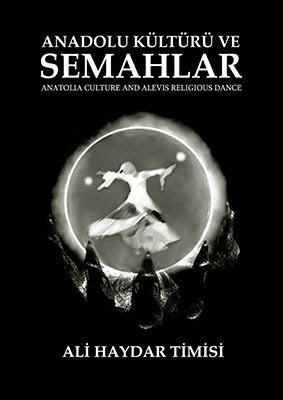ANADOLU KÜLTÜRÜ VE SEMAHLAR (ANATOLIAN CULTURE AND SEMAHS)
We see that Turkish community has maintained its moral values such as customs and traditions that have lasted for centuries in a great purity in and around a center unless the community opens to foreign countries from a closed center. It is clear that people maintain their beliefs and practices antecedent to religions traditionally even though these are not specified in a the books of the religion they have adopted and they reveal them as a connective element with the significant link established among the community. SEMAHS, the subject of this book, are one of the most important values that our people’s refined tastes set forth. Ali Haydar TİMİSİ introduces a perfect scientific study by handling and analyzing SEMAHS extensively who have various characteristics in terms of music, figure and expression.
YÜCEL PAŞMAKÇI (Folk Music Specialist – Lecturer)
–
Starting with the Mother Goddess Cybele, Ali Haydar TİMİSİ examines that the communities that lived in Anatolia, just like all the other communities, adopted various religions and beliefs throughout history within the frame of changing and developing cultural structure and that they maintained some of the practices of their old beliefs in their new religion. The scientific study which was created with this historicity teaches us that “SEMAHS” which are the most important ritual of Alevist-Bektashi belief has emerged as a synthesis containing expressions, music structure and words symbolized by the figurative features of Semahs and traditional Anatolian folk culture and Turkish traditions in the Central Asia. Proving that SEMAHS tally with the values of the oldest Anatolian civilizations of thousands of years , TİMİSİ brings science and art together with his objective approach which quotes that it is wrong to associate them only with Islam or to define them only in the Central Asian traditions.
ÖNER YAĞCI (Turkish Investigative Author)

